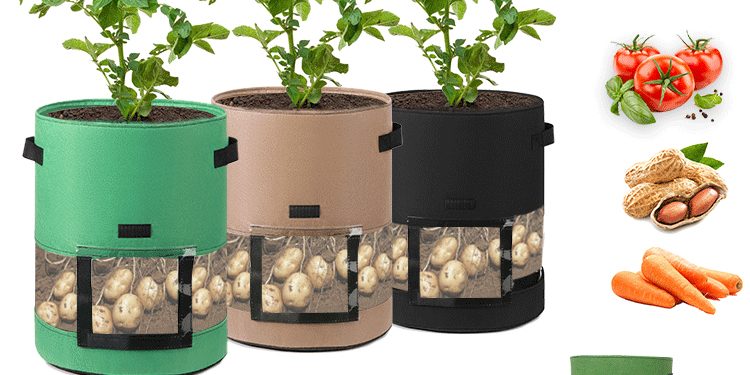In recent years, there has been a growing desire among urban dwellers and indoor gardening enthusiasts to cultivate their own fresh vegetables. Fabric grow bags have emerged as a green and efficient solution for indoor vegetable gardening. In this article, we’ll explore how fabric grow bags empower you to grow your own vegetables indoors while contributing to a sustainable lifestyle.
Space Efficiency in Urban Settings
Growing vegetables indoors in urban settings can be challenging due to limited space. Fabric grow bags are compact and fit easily on windowsills, kitchen counters, or balconies. This space-efficient design allows you to create a mini vegetable garden even in the coziest of living spaces.
Healthy Root Systems for Bountiful Harvests
The health of a vegetable plant’s root system is critical for a bountiful harvest, and fabric grow bags excel in promoting robust root development. The breathable fabric ensures that roots have access to oxygen from all sides, preventing issues like root circling and encouraging the growth of a well-structured root network. Healthy roots translate to productive vegetable plants.
Efficient Drainage for Vegetable Success
Proper drainage is essential for growing vegetables, and fabric grow bags provide efficient drainage. The porous fabric allows excess water to escape, preventing waterlogged soil and root rot. This efficient drainage system ensures that your indoor vegetables receive just the right amount of moisture, reducing the risk of overwatering.
Temperature Regulation for Ideal Growth
Maintaining a stable soil temperature is crucial for vegetable growth, and fabric grow bags help regulate it. During hot weather, they dissipate excess heat, preventing soil overheating and potential root damage. In colder indoor environments, the fabric acts as insulation, protecting vegetables from chilly temperatures.
Easy Mobility for Sunlight Optimization
To optimize sunlight exposure, you may need to move your vegetable plants indoors. Fabric grow bags are lightweight and easily portable, allowing you to position your vegetable garden where it receives the most sunlight throughout the day. This mobility ensures that your indoor vegetables thrive and produce abundant yields.
Sustainability and Reusability in Vegetable Cultivation
The sustainable gardener will appreciate that fabric grow bags contribute to environmentally friendly vegetable cultivation. By reducing the need for disposable plastic pots, these bags minimize waste and align with eco-conscious indoor gardening practices. Moreover, they are reusable season after season, making them a cost-effective and eco-friendly choice.
Versatile Vegetable Selection for Your Indoor Garden
Fabric grow bags accommodate a diverse selection of vegetables, from herbs and leafy greens to tomatoes and peppers. You can create a customized indoor vegetable garden that suits your culinary preferences and provides you with fresh, homegrown produce year-round.
Conclusion
Fabric grow bags are revolutionizing indoor vegetable gardening by offering space efficiency, healthy root systems, efficient drainage, temperature control, easy mobility, sustainability, and a wide range of vegetable options. As you embark on your journey to cultivate fresh vegetables indoors, consider the numerous advantages of using fabric grow bags to create a sustainable and productive indoor vegetable garden that brings the joy of homegrown produce to your urban lifestyle.






